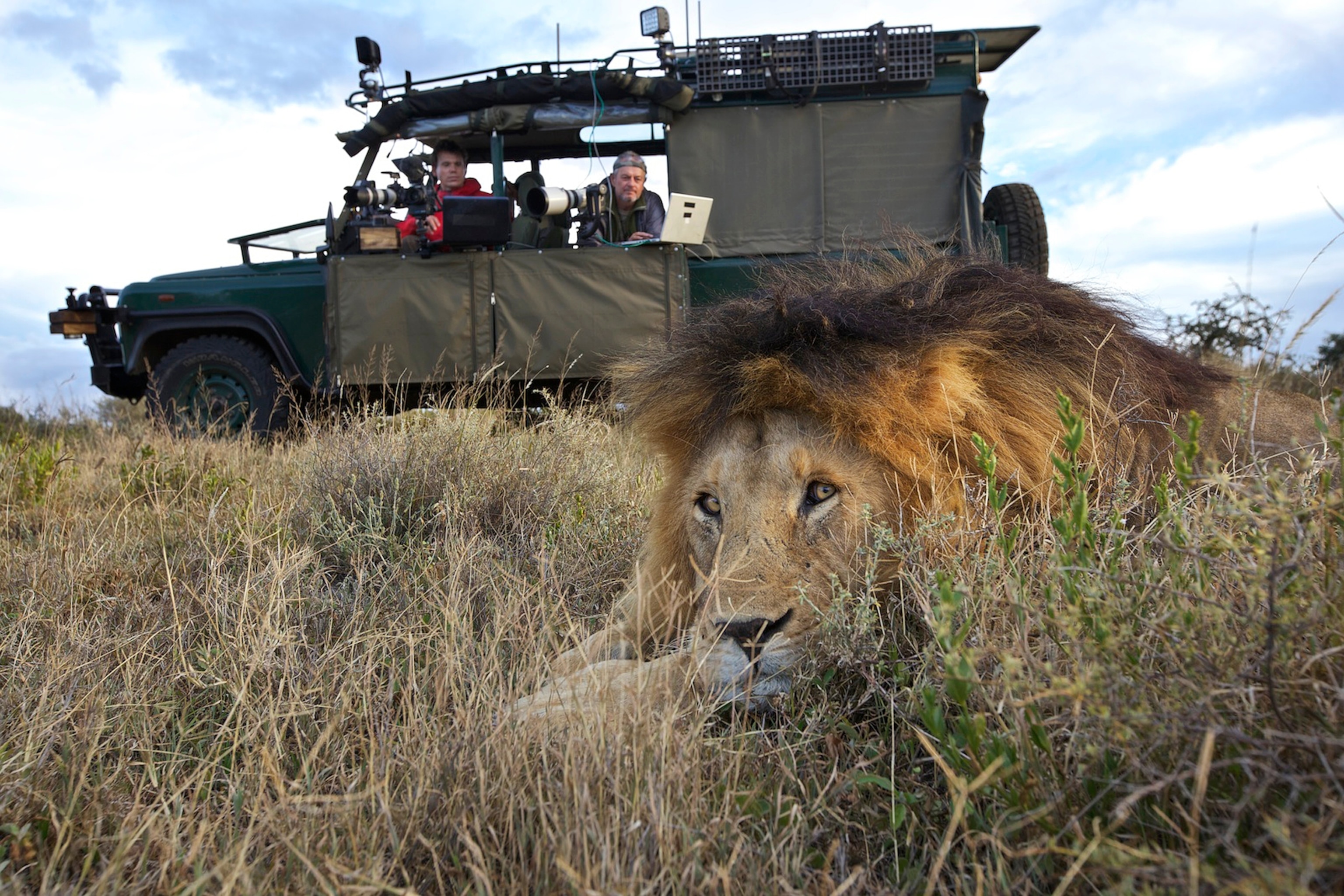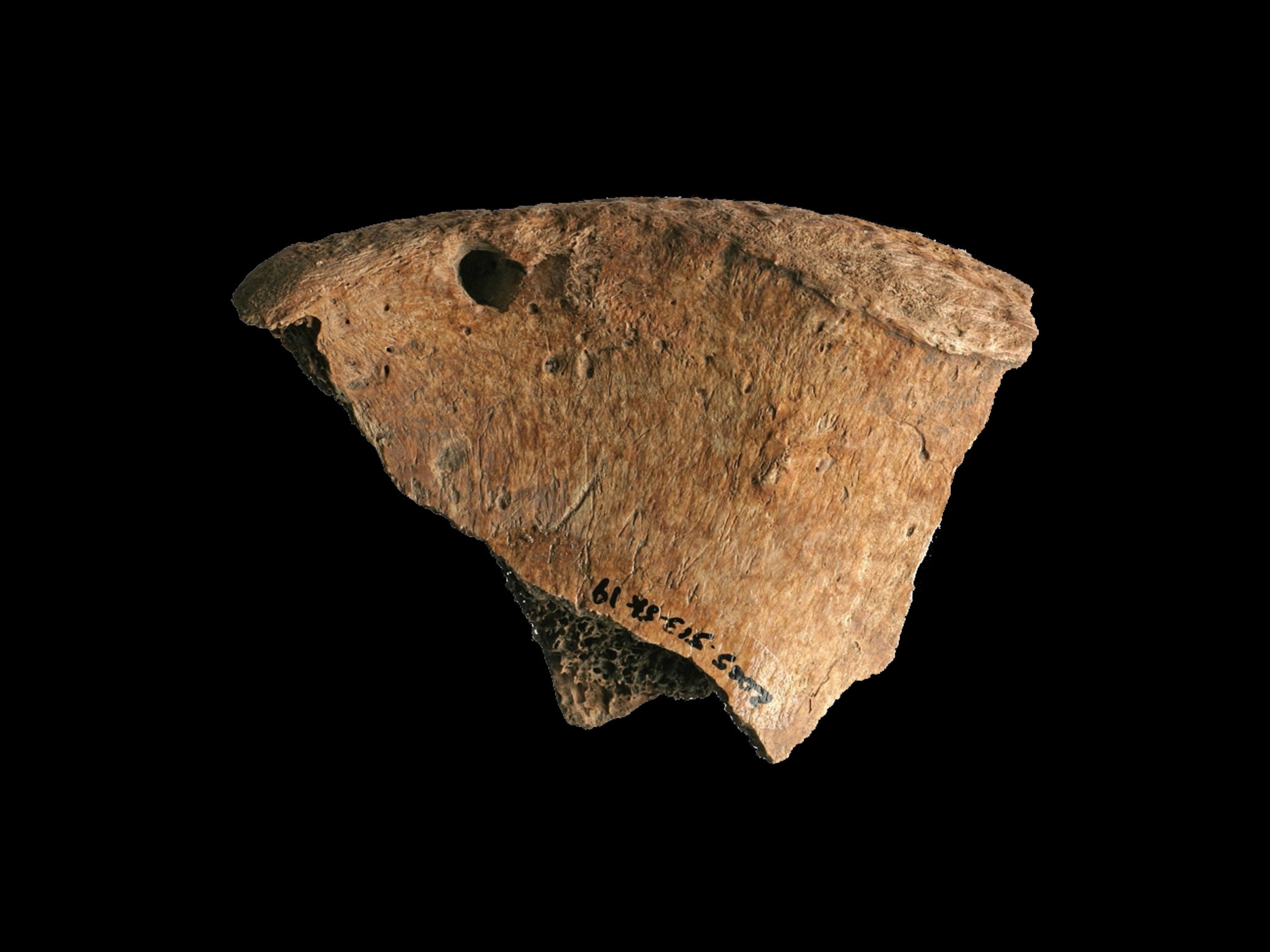
How to Take Stunning Lion Photos
Nick Nichols used infrared photography, micro-drones, a robot, and a "lion car" in the Serengeti.
Over the past few years, Michael "Nick" Nichols has been photographing lions in Africa's Serengeti. To capture never-before-seen images for the August issue of National Geographic magazine, Nichols employed a range of high-tech tools, from infrared photography to micro-drones. (See an interactive experience on the Serengeti lion based on Nichols' work.)
Nichols is an award-winning photographer who has traveled the world and shot many features for National Geographic, while working at the magazine as a staff photographer and as editor at large for photography. He also founded the annual LOOK3 Festival of the Photograph in Virginia, has produced several photography books, and is known for his recent work on orphan elephants, giant sequoias, and poaching in Chad. Born in Alabama, Nichols lives in Sugar Hollow, Virginia. (See "Assignment of a Lifetime" and "National Geographic Photographers Suffer for Their Art and the Planet.")
National Geographic spoke to Nichols about his work and what it was like to spend intimate moments with African lions. (Related: "The Short Happy Life of a Serengeti Lion.")
What's the backstory behind these spectacular photos of lions?
We started thinking about this story five years ago. The story I wanted to tell is tied to a 35-year study of lions in the Serengeti Plain.
Lions have already been photographed a lot. But there are a lot of barriers to making interesting photography. Lions sleep all the time. In the day they are in energy-saving mode, and they work at night. Almost all images are made from the protection of a car, because they are dangerous predators. So you see a lot of portraits through telephoto lenses, mostly of things like lions sleeping under trees.
Lions are totally ruled by their landscape. There are places where they are more active in the daytime, like in areas where they specialize in killing buffalo. But for the prides in the study, their prey is principally wildebeests, zebras, and gazelles. There is no cover there, so they hunt on a dark, moonless night unless other easy opportunities arise. They hunt with cooperation.
What camera did you use?
I didn't want to make pictures of lions at night squinting from [a car's] headlamps. Their eyes are very sensitive because they are super vacuum cleaners of light. So we used infrared light, which I couldn't see and they couldn't see.
Photography technology has changed dramatically in my career. I used an off-the-shelf Canon camera. I sent it to a specialist, who removed the top layer of the camera's sensor, which makes it become sensitive to infrared light.
[Using it at night with the infrared lights,] I didn't have autofocus or autoexposure, so it made photography very dysfunctional. But I was trying to show a new view, not pictures you've seen before.
Does altering the camera's sensor void its warranty?
Yes, it voids the warranty, and it voids the camera's ability to clean the sensor. Because dust is such a problem, they have anti-shaking devices and cool technology that cleans the sensor.
The camera will no longer function quite as a normal camera, but it allows you to function with infrared light, and that opened up a whole new world to me. All the images [published in the August issue of National Geographic magazine] that look black and white were made using the infrared sensor.
Can you tell us about the infrared lights you used?
We mounted the lights on top of our truck. It's an LED [light-emitting diode] light source that produces infrared. It doesn't use much power and doesn't get hot. I think they are normally used for some kind of surveillance.
Dave Matthews [in the National Geographic photoengineering lab] ordered all that stuff for us.
Why did you decide to use a remote-controlled camera robot? (See video.)
You don't want to be looking down on animals: They hate it; it is demeaning to them. Old zoos put the animals in pits, but if you go to a modern zoo you look up at the tigers. That makes their lives better; it makes them feel like king of the beasts. I couldn't bear photographing lions looking down on them; it made me sick to my stomach. I wanted to photograph them at their level or lower.
So we had a ground-level robot, basically a mini remote-controlled tank. It was from a company that makes them to defuse bombs and stuff like that, called SuperDroid Robots.
We had no idea when we started two years ago if we could actually do it, but when you think about lions and who they are, they are so supremely confident that they could give a **** about this robot. An elephant would stomp it or run away, and all other animals would run away.
After only three visits they didn't care about that tank. At first they were cautious. Some of the most cautious ones moved to the back of the family. But after five or six times they were all falling asleep with it.
Was it challenging to operate the remote camera?
Nathan [Williamson], my assistant, does all the piloting. It's basically like a video game. I had to do all the photography through the computer. There is a delay, and [there was] constant failure of the Wi-Fi. We had to be ready for when the lions would lick each other or do something besides sleep, so we would get it into position to make the picture, and then the Wi-Fi failed and we would lose everything.
Nothing was easy; it was trial and error.
How did the micro-drone work out?
We had a MikroKopter (see photo) to give us a view of the Serengeti without bringing in a helicopter. Those are dangerous. They require a lot of permits to fly low, and they make a lot of noise and smoke, which scares lions away. Using planes and helicopters was a life of frustration. You have to hire them in advance, so you never have them when you need them.
At first the lions were a little spooked [by the MikroKopter], but then they seemed to have fun with it. One time one of the pride even jumped and tried to grab it. They seemed to know [the remote-controlled devices] came from us; they saw our green car, and they knew we didn't prevent them from getting a meal. So we could fly over these lions when they were sleeping. We crashed it a few times and had to replace it.
We ended up not publishing any shots from the MikroKopter in the magazine. We chose that black-and-white landscape of the lions lying on the rock because it was more dramatic than anything we got from the MikroKopter.
Who provided the technology?
We raised the money for it from philanthropy and from the R&D department at National Geographic.
How did you build your "lion car" for the photo excursions?
We raised money and bought a 10-year-old Land Rover pickup from a farm in England. It was shipped by boat to Kenya.
With our direction, my Kenyan friend Rob Carr-Hartley created the lion car. He hired and directed a fabricator who fixes cars up for the safari industry, NDovu motors of Nairobi.
They made hatches in the roof so we could stand up and see through, and places to carry all the boxes and a refrigerator. The windshield folded down so there was no glass in front of me. We took the doors off the side so you could see left and right. I could lie down and shoot off the floor, from almost any angle.
What was the work like?
We hired a safari company that fed us, fueled us, and had tents for us, because we wanted to work all the time. Otherwise we would have spent at least half the time just taking care of ourselves. We did a few all-night follows, and they are just brutal.
My wife was a spotter and driver. We've been together 30-something years but had never worked together on a project. Our kids are grown now. She could identify the cats and was an integral part of this team effort.
Nathan and I have been together 10 years, [and] this was the culmination of our work together. Now he is going to be out on his own doing video. He has a lot of mechanical skills. I was the creative guy, the obsession. It's something that was passionate.
You have to lay siege: You don't take days off; you just sit with lions. You cannot do it any other way. You need to know if they've had a meal or not, because when they have a meal they sleep it off. I was trying to get continuity out of one pride, though I was monitoring four.
I'm not trying to change the game. I was just there to witness.
What technology would you like to have in the future?
Ten years from now, there will be a chance to do another definitive lion thing because technology will make it so you can really work at night.
I'd also love to have an electric car, because a combustion engine makes a lot of noise. I was determined not to cause the lions to lose a meal. They are fragile, so if they miss a meal they could die. They don't process their food very well—when they **** it is still a lot of protein.
Any final thoughts?
The real key is what's going on with these lions? I was out there 24/7, so I saw lots of crazy stuff.
This Q&A has been edited.








